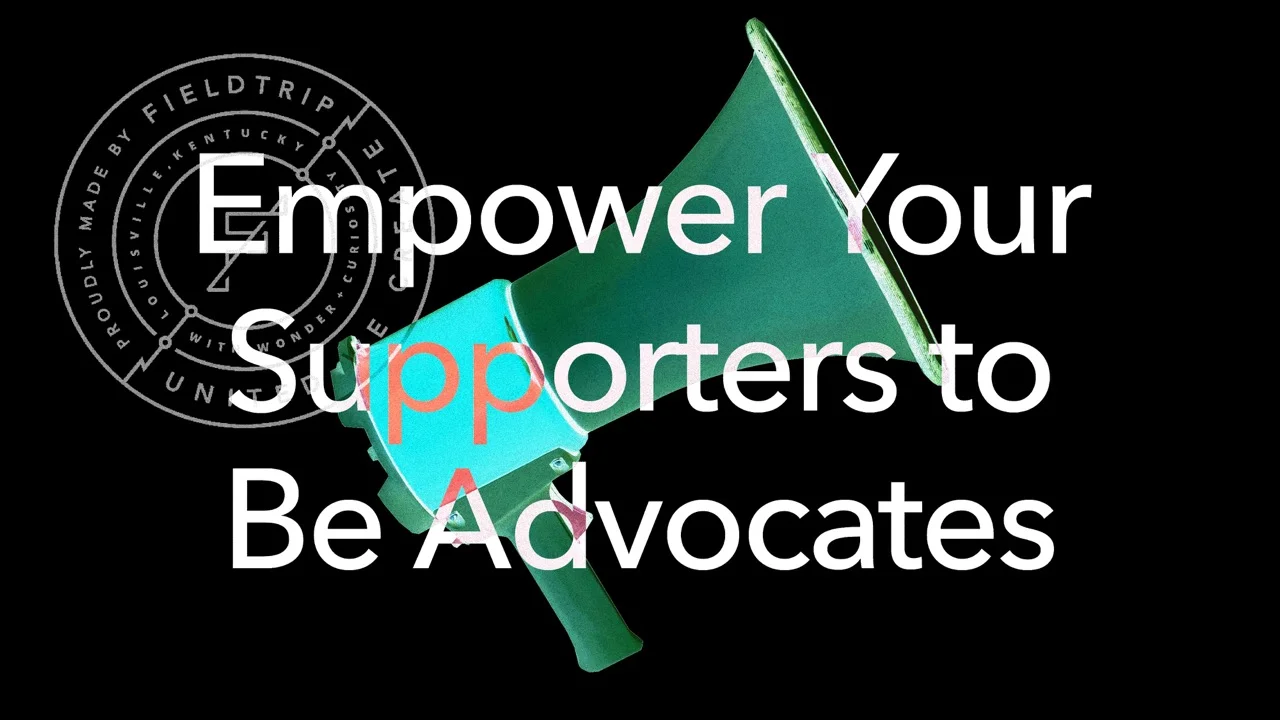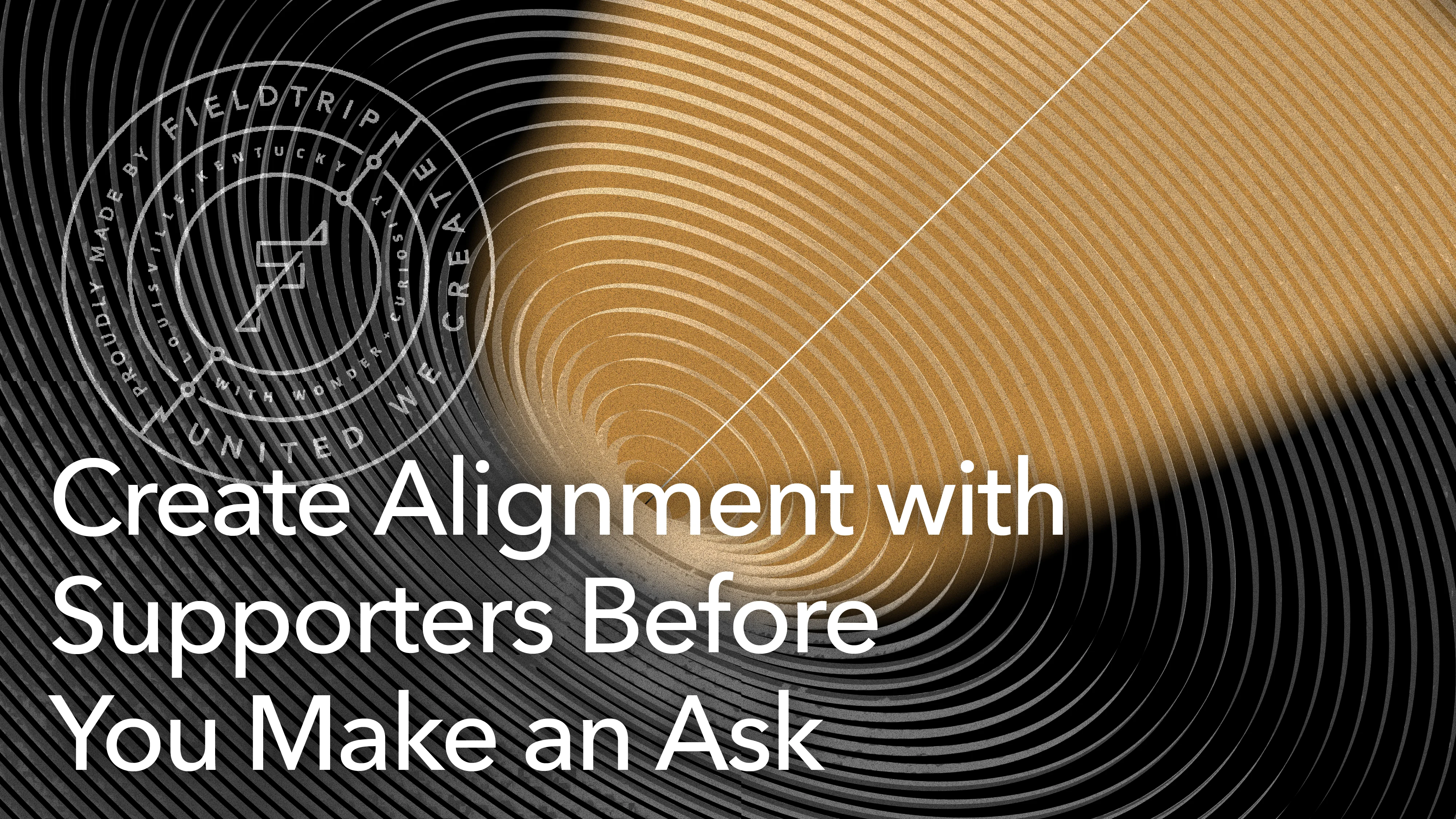Hello and welcome to Mission Multiplier. I’m Jane Pfeiffer, founder and president of Fieldtrip. Fieldtrip is an agency that’s dedicated to helping nonprofits close the gap on their biggest expense. And that’s the cost of lost opportunities because people don’t know about you or they don’t understand your mission and what you do or how it impacts the world. And we do that work by addressing a couple of key issues. So we work with executive leaders to help them with the feeling of being stuck because they’re the best-kept secret. That makes everything harder. We help leaders with the feeling of being overwhelmed by the enormous gap between the people that they help and the people who can support the mission, which creates friction around the resources, and the money needed to staff and provide programs and services as best you can. Also, leaders are very frustrated because they have to constantly explain what they do, why it’s important, and why it matters. And when you’re passionate about the mission, it just almost feels insulting. And we’re going to talk about that frustration today. So if you’re frustrated with the need to constantly explain what you do and why it matters, you’re not alone. You’re ready to change, but you don’t know how to change that.
Well, I can tell you what happens most often is that we get stuck in this habit of explaining what we do and the details and the tactics, rather than creating curiosity and inviting people to kind of lean towards us to learn more. It’s that slight emotional hook over a detailed explanation of tactics and features of what we do if that makes sense.
We’re going to run an exercise called the benefit of the benefit that we use with most of our clients to help identify how they can go from explaining to provoking curiosity. Now I’m going to step way outside the category of nonprofits and talk to you about actually an automotive brand. And the reason we do this is as people, we’re exposed to automotive advertising all the time, so we can very easily understand who they are and how they show up. Today we’re going to talk about this exercise, the benefit of the benefit, and how we move from the tangible to the intangible. And we’re going to use Jeep as an example of how to do this exercise. Again, to get you to stop thinking about where you are and imagine how powerful identifying this kind of curiosity can be.
Jeep could, if they were being very tangible, explain and talk about their brand as, “Hey, a Jeep provides the ability to get around.” But what automobile doesn’t provide that? Every brand would provide that promise. It’s nothing unique. What’s the benefit of being able to get around in a Jeep? Well, you can go to new places that traditional vehicles may not be able to reach. So that’s something unique. But there are a lot of four-wheel drive vehicles out there. Other brands promote the rough and rugged road to take. So you’re not unique yet. The benefit of being able to get to new places is that you can escape from your daily routine. It’s just something different, a little more unique. Now we’re talking about fewer car brands that might be there. You might look at the old brand Hummer or a Range Rover, but we’re narrowing the competition and we’re getting a little more towards that emotional benefit rather than, what, four wheels that an engine and all the other parts and pieces does for you. Where we end up in that emotional range is freedom and fulfillment. Freedom from the daily routine, the ability to go to new places, that ability to go to a place and create an experience and feel like perhaps you’re there all alone or with people that you want to create experiences and memories with. But it’s not a popular road. It’s a different path and one that perhaps only you can take. Now that’s where people can opt in and begin to imagine where that might be. My first image goes to somewhere in the Grand Canyon and thinking about all the unique sights that you could see if you had a Jeep and of course, access to view the sights there. Now I’m thinking about Jeep and an emotional experiential way and not about what has four-wheel drives and all the things and that the top can come off. I’m not thinking about the features. I’m thinking about what I can do because I have this unique vehicle.
Back to the model. Let’s start with what you do and then take it to the way your mission makes people feel. In Mission Multiplier videos, I’ve talked about my imaginary nonprofit, and I’ve described it as an organization that feeds 500 children breakfast before school. Again, I’m explaining what we do. It’s tangible, it’s rational. Everybody can get that right. When I explain it, this way, I’m going to get questions about what do you feed them? How does that work? Where do they get breakfast? Why don’t they have breakfast at home? And we’re already setting ourselves up for a conversation that’s weighted and details and explanation and perhaps some interest, but perhaps also being defensive with the need to explain because people are making negative assumptions.
What’s the benefit of children who might come to school hungry and start their day with breakfast? Well, they’re not hungry. They have a nutritious meal that’s good for their mind and body and they’re at school. Great. Now that’s moving the needle a little bit, but still not compelling. Well, we know that by starting the day with a nutritious breakfast, students are more likely to pay attention. They can retain information and they’re more likely to attend school every day. That’s great. But we could say the same thing about maybe other benefits when we take it to the emotional level. And we explain that by having breakfast and solving an issue of food scarcity or hunger for these 500 students, we’re talking about nourishing the minds of tomorrow. When someone would ask me and my imaginary nonprofit, “What does this nonprofit do?” “Well, we nourish the minds of tomorrow…” Yes, intentionally pause. People have to ask, well, what do you mean by that? How does that work? And now we’re having a higher level conversation about the impact of our work and how we make people feel because it is an investment in the mind and body and our future. And that creates a different conversation.
You can get this worksheet for yourself by clicking the link here and working through it yourself. And if you have questions, I’m only a phone call or an email away. Thanks for watching and we’ll see you next time. Bye!



